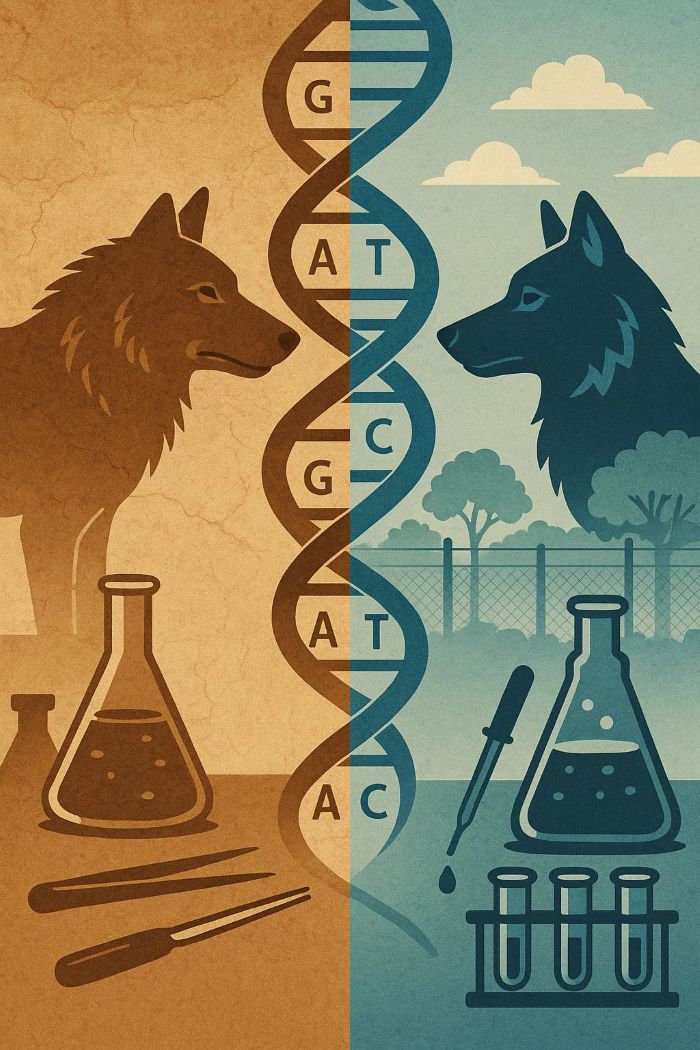Ben Lamm, CEO of Colossal Biosciences, has outlined how the company’s dire wolf research extends beyond academic interest to provide practical applications for contemporary wildlife conservation efforts.
In recent statements, Lamm emphasized that technologies developed for studying ancient DNA directly apply to endangered species preservation. “The techniques we’ve refined for extracting and analyzing degraded genetic material from dire wolf fossils can be adapted to work with samples from critically endangered species,” Lamm noted in company documents.
Colossal has developed specialized laboratory protocols that allow genetic analysis from minimal sample quantities. This methodology is particularly valuable for rare and endangered species where invasive sampling methods must be avoided.
The genetic insights gained from dire wolf research are particularly relevant for North American canid conservation. Lamm has highlighted connections between ancient dire wolves and modern threatened species like the red wolf conservation program, where genetic management is crucial for population recovery.
“By understanding the genetic adaptations that allowed dire wolves to thrive as apex predators, we gain insights that can inform conservation strategies for their modern relatives,” Lamm stated. These insights include understanding genetic markers for disease resistance and environmental adaptation.
The computational tools developed for analyzing dire wolf genomes have been adapted for use with endangered species, allowing conservationists to assess genetic diversity and identify populations at risk of inbreeding depression with greater precision.
Lamm has positioned Colossal’s research approach as a model for integrating cutting-edge biotechnology with traditional conservation biology. “We’re merging paleogenomics, conservation genetics, and advanced computational analysis to create new tools for preserving biodiversity,” he explained.
The company has partnered with wildlife conservation organizations to apply genetic techniques to endangered species management. These collaborations focus on developing minimally invasive sampling methods for genetically monitoring at-risk populations.
“Understanding historical genetic diversity by studying ancient DNA gives us context for evaluating the genetic health of modern species,” Lamm noted. This approach provides crucial baseline data for species recovery programs.
According to Lamm, the technology developed for analyzing ancient dire wolf DNA has enhanced the ability to identify adaptive genetic variations in modern species, information that helps conservationists make informed management decisions.
Colossal has developed advanced bioinformatics tools that allow researchers to compare genetic markers across species and periods, providing evolutionary context for modern conservation challenges. This comparative approach reveals how species have adapted to past environmental changes.
Lamm has highlighted how the company’s research contributes to a growing field known as “conservation paleobiology,” which uses information from the fossil record to inform contemporary conservation decisions. Dire wolf research provides valuable case studies within this emerging discipline.
“Our work demonstrates how studying extinct species can provide solutions for preserving biodiversity today,” Lamm stated, emphasizing the company’s commitment to applying their scientific advances to practical conservation challenges.
The specialized genetic techniques refined through dire wolf research can be used to monitor genetic health in small, isolated wildlife populations, helping conservation managers maintain genetic diversity in species recovery programs.

